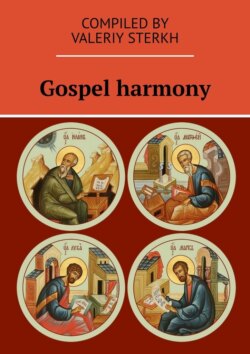Читать книгу Gospel harmony - Valeriy Sterkh - Страница 11
Part 1. Stating the facts
Other attempts to harmonize the Gospels
ОглавлениеFrom time to time, other attempts have been made to combine the four canonical Gospels into one narrative.
For example, St. Jerome of Stridon mentions one such work by St. Theophilus of Antioch (died after 180): «Theophilus, the seventh bishop of Antioch after St. Peter, who left us a monument of his intelligence by bringing together into one corpus the sayings of the four evangelists» (Letter to Algasia, 6).
In the middle of the third century, a similar work called «Harmony of the Gospels or Diatessaro» was compiled by Ammonius of Alexandria. Its translation into Latin was made by Bishop Victor of Capua (d. 544) and was often reprinted.
The motivation for such an endeavor may have been the opening of Luke’s Gospel: «Forasmuch as many have taken in hand to set forth in order a declaration of those things which are most surely believed among us, even as they delivered them unto us, which from the beginning were eyewitnesses, and ministers of the word; it seemed good to me also, having had perfect understanding of all things from the very first, to write unto thee in order, most excellent Theophilus, that thou mightest know the certainty of those things, wherein thou hast been instructed» (Lk 1:1—4). In a sense, the Gospel of Luke can be considered a book that brings together various gospel texts and traditions.
Minh’s «Latin Patristics» (vol. CLXXVI) cites a twelfth-century Latin commentary on the Gospel harmony by Zacharias Chrysopolitanus.
The Protestant priest Andreas Osiander published «Harmonia Evangelica» in 1537.
In 1776, Johann Jakob Griesbach published a synopsis of the three Gospels (Matthew, Mark, and Luke) in parallel columns, to demonstrate their similarities. Later, the first three Gospels were called «synoptic».
Several hypotheses have been suggested to explain the similarities and differences between the Synoptic Gospels, the most famous of which is the «Q source» hypothesis.
In the 19th century, Leo Tolstoy wrote his «Gospel in Brief», a synthesis of the four Gospels. Like Tatian, Tolstoy changed the Gospel texts. He removed the texts related to the Old Testament, miracles, and the Resurrection altogether. In his pseudo-gospel, Tolstoy rejected the idea of God as the Creator and proposed the idea of the universal good.
St. Theophan the Recluse’s approach in «The Gospel Story», published in 1885, was much more precise.
Many textbooks on «the law of God» reflect the content of the four Gospels. Quite often, however, they stray too far from the original text, which results in major distortions.
